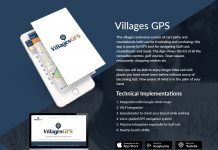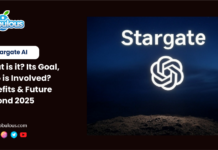E signature software development is consistently revolutionizing document management in 2024 and offers seamless and hassle-free digital signing solutions that improve efficiency and security. Building such software involves strategic planning, compliance with emerging legal standards, and advanced technology integration.
Studies have shown a tremendous 82% of e signature businesses perceive ROI within 1 year with 25% of businesses experiencing it in just 3 months. No spectacle why startups and big companies are darting bold to capitalizing on their corporations by working on their own e signature software development.
In this exhaustive guide, we delve into the critical steps and concerns for top-notch e-signature software development tailored to the modern needs of the business in 2024. Let’s step forward and dominate the app development approach of the e signature platform in order to stay ahead in the competitive landscape.
What is E Signature Software?
E signature software refers to digital tools that allow users to sign documents electronically. This eliminates the need for conventional paper-based signatures. It stimulates the creation, distribution, signing, and surveillance of documents in a digital setup by simplifying workflow and lessening dependence on physical paperwork.
E-signature solutions naturally suggest various features like document encryption, secure authentication, audit trails, and observation with lawful standards such as the eIDAS limitations and the ESIGN Act.
Businesses and individuals leverage the best e signature app development software in order to enhance efficiency, expedite contract processes, reduce environmental impact, and improve security by transitioning to paperless document transactions in today’s digital landscape.
E Signature Software Development in 8 Easy Steps
E signature software development involves various key steps in order to ensure a potent and efficient e signature solution. Here is a complete breakdown of the steps that you need to follow in order to develop an e signature platform seamlessly and hassle-free.
- Research and Planning
- Designing the User Experience
- Implementing Core Functionalities
- Choosing the Right Technology Stack
- Ensuring Security and Compliance
- Testing and Quality Assurance
- Deployment and Launch
- Post-Launch Maintenance
Also Read:- How to Create an App?
1. Research and Planning
Comprehensive research and planning for the e signature project are crucial for e signature software development. For this, you need to identify the target audience, their needs, and industry regulations.
Examine the existent solutions, their pros and cons, strengths and weaknesses, etc. Assemble essentials from stakeholders and illustrate the scope, goals, and resources of the software.
Develop an expansive project plan that will possess a timeline, resources, and milestones. Establish contingency plans and risk management strategies for potential growth and challenges.
2. Designing the User Experience
User Experience (UX) is significant for the adoption and conquest of document-signing software. For this, you ought to perform user research in order to comprehend their pain points, workflows, and preferences.
Design user-friendly and intuitive interfaces, streamlining the signing process of the document. Incorporate the best practices of accessibility, usability, and responsiveness across multiple devices and e-signature platforms.
Make sure that the visual design of the software aligns with the branding guidelines and provides a cohesive and consistent experience.
3. Implementing Core Functionalities
Include core functionalities that meet the requirements of the e signature software development. Implement features like annotation tools, document uploading, multi-party signing workflows, secure document storage, and signature capturing (e.g., typed, handwritten, or biometric).
Incorporate with existing systems and third-party services for hassle-free document management and collaboration. Make sure to prioritize performance optimization and scalability to handle and manage large volumes of users and documents.
4. Choosing the Right Technology Stack
Choosing the right technology stack is essential for e signature software development. You must consider some factors like frameworks, programming languages, databases, development tools, and cloud services.
Make sure to consider the security, maturity, scalability, and undertaking of each technology segment. Ensure the chosen technology stack aligns with the necessities of the project, the expertise of the team, and long-term supervision and support contemplations.
5. Ensuring Security and Compliance
E signature software development must comply with several regulations and security standards like eIDAS (Electronic Identification and Trust Services), UETA, GDPR, ESIGN Act, etc. Make sure to implement potent authentication mechanisms, tamper-evident sealing, digital signature validation, and data encryption.
Combine logging and audit powers for adherence reporting and forensic analysis. Further, make sure to execute penetration testing and security audits in order to specify and fix bugs or any susceptibilities.
6. Testing and Quality Assurance
Execute a stringent testing method, including integration testing, unit testing, security testing, and usability testing. You must embrace industry-standard testing procedures like test-driven development (TDD), agile testing, and behavior-driven development (BDD).
You need to observe and validate the functionality, adherence, and performance constantly with ordinances and industry benchmarks. With this, you can make sure that your free esign software is high-performing and bug-free.
7. Deployment and Launch
Create a full-bodied deployment schedule that considers aspects like infrastructure provisioning, user onboarding, data migration, and change surveillance. Determine the suitable deployment measure (on-premises, hybrid, or cloud) on the basis of the prerequisites and limitations of the organization.
You must ensure seamless and consistent integration with existing systems and processes and provide extensive documentation, support, and training to users and stakeholders.
8. Post-Launch Maintenance
Ongoing maintenance and support are essential for the long-term success of the e signature software development. Make sure to establish processes for security patching, bug fixing, and feature improvements on the basis of emerging industry trends and user feedback.
Additionally, monitor performance, user behavior, and usage metrics in order to identify the areas for improvement. Update and maintain the documentation regularly and provide ongoing user support and training.
Must-Have Features in E Signature Software Development
E signature software development includes the most crucial features that ensure the usability, security, and legality of digital signatures. Let’s learn what features you need to add when developing an e signature platform.
1. Authentication and Identity Verification
In order to verify the identities of the signer securely, you need to add a robust authentication method like knowledge-based authentication (KBA) and multi-factor authentication (MFA).
2. Document Preparation and Management
Document preparation and management tools should be added for uploading, preparing, and organizing the documents for signing. This includes merging, templates, and splitting functionalities.
3. Signature Placement and Options
In order to ensure signer flexibility, you need to include flexible signature placement options with support for drawn, typed, or uploaded signatures.
4. Audit Trail and Document Tracking
An extensive audit log tracks document history, including who viewed, accessed, and signed the document. This provides compliance and accountability.
5. Encryption and Data Security
In order to safeguard susceptible and confidential information from unauthorized access, you ought to establish end-to-end encryption of documents and signatures within the software.
6. Compliance and Legal Validity
In order to ensure the enforceability and lawful validity of e-signatures, you must stick to industry benchmarks and constraints like eIDAS, GDPR, and the ESIGN Act.
7. Integration Capabilities
In order to streamline workflows, make sure to incorporate seamless integration with prevalent enterprise apps such as ERP, CRM, and document management systems.
8. Workflow Automation
You must include the automation of document routing, approval processes, and notifications in order to reduce manual intervention and improve efficiency.
9. Mobile Accessibility
Make sure to incorporate cross-platform compatibility and mobile-centric interfaces in order to facilitate document management and signing on tablets and smartphones.
10. User Experience (UX) Design
In order to ensure a smooth and hassle-free signing experience for both administrators and signers, you must make sure to include a seamless signing experience for both administrators and signers.
11. Notifications and Reminders
You must include automated notifications and reminders for expiring documents and pending signatures in order to keep your transactions on track.
12. API and SDK for Customization
Open software development kits (SDKs) and APIs for developers in order to customize and extend features and functionalities as per the specific requirements of the businesses.
13. Offline Signing Capability
Your e signature software development should have the ability to sign documents offline with synchronization once connectivity is restored. This ensures flexibility for users in low-connectivity or remote environments.
Right Technology Stack for E Signature Software Development
Choosing the right technology stack and the most delinquent app development trends for robust and effective e signature software development is essential. The technology stack consists of frontend, backend, infrastructure, and database components.
Here is a complete breakdown of the essential technology stack for your online signature app development:
1. Frontend Technologies
- JavaScript Frameworks: Leverage contemporary frameworks like React.js or Angular in order to build interactive and responsive user interfaces for hassle-free document signing experiences.
- HTML/CSS: Leverage HTML for structuring web pages and CSS for styling. This provides a visibly appealing, engaging, and user-centric interface.
For Help: Hire an Angular.js Developer or React.js Developer!
2. Backend Technologies
- Server-Side Language: Select an efficient and scalable language like Python, Java, or Node.js in order to handle server-side logic and API integrations.
- Framework or Runtime: Leverage frameworks such as Express.js (for Node.js) or Flask/Django (for Python) in order to streamline backend development.
3. Database
- Relational Database: You must consider leveraging SQL-based databases such as MySQL or Postgre SQL in order to store user information, document metadata, and audit logs.
- NoSQL Database: Leverage Firebase Firestore or MongoDB for flexible storage or unstructured data such as document attachments or user preferences.
4. Authentication and Security
- Authentication Services: Execute JWT (JSON Web Tokens) or OAuth for secured permission and user authentication.
- Encryption: Leverage SSL/TLS protocols for data encryption during transmission and at rest in order to guarantee obedience and document protection.
5. API Integrations
- Third-Party APIs: Incorporate with popular APIs like Dropbox, Google Drive, or CRM systems (e.g., Salesforce) in order to foster document import/export and workflow automation.
6. Infrastructure and Deployment
- Cloud Services: Host your app on portative and scalable cloud platforms such as Microsoft Azure, Google Cloud, or AWS (Amazon Web Services) for accessibility, scalability, and dependability.
- Containerization: Utilize Docker for containerizing applications and Kubernetes for orchestrating container deployments. This ensures ease of scalability and consistency.
7. Development Tools
- Version Control: Implement Git for code versioning and collaboration among app and software developers.
- Continuous Integration/Continuous Deployment (CI/CD): Make use of CI/CD pipelines with the assistance of devices such as GitLab CI or Jenkins for mechanical testing, building, and deployment.
Types of E-Signatures
There are three leading classifications of electronic signatures such as simple, advanced, and qualified. Let’s comprehend them in a bit more detail.
1. Simple Electronic Signatures (SES)
This is the most simple yet amazing type of eSignaure. Generally, they don’t need identity verification and are used for documents with low liability threats.
Since these signatures have minimum legal weight when compared with advanced and qualified electronic signatures, they are usually used to sign various documents like information letters, internal documents, and others.
2. Advanced Electronic Signatures (AES)
The Advanced Electronic Signatures (AES) mandate an elevated tier of user authentication. The main purpose of AES is to recognize the signatory and ensure that there are no subsequent alterations in the data.
Nevertheless, AES requires certification from a Certificate Authority and typically counts on public-key infrastructure (PKI) technology with the help of cryptographic keys and certificates. Documents that utilize the AES e-signature solution are Mortgage documents, non-disclosure agreement forms, rental agreements, and others.
3. Qualified Electronic Signatures (QES)
QES or Qualified Electonic Signatures are regarded as identical as to handwritten signatures. This implies not only the act that they are leveraged for signing the documents with high liability threat but also that they fulfill the stringent needs for authentication.
However, there are some documents that use the QES e-signature solution like bank loans, audit reports, consumer credit contracts, and others.
How Does E Signature Work?
An e-signature works by leveraging cryptographic approaches to establish the signer’s originality and guarantee the signed document’s probity. Firstly, the signer makes a digital replica of their signature with the assistance of a private key that is unusual to them.
This private key renders a digital signature as per the document. After this, recipients can ascertain the genuineness of the signature with the assistance of the signer’s general key that is associated with their individuality.
The validation approach ensures that the document has not been altered or changed since it was first signed. Digital signatures deliver a tamper-evident and protected approach to electronically signing documents in order to secure trust and integrity in digital marketing.
Benefits of E Signature Software
E signature software development offers immense benefits that improve security, efficiency, and convenience significantly in business transactions and document management. Let’s discuss some important benefits of e signature software.
1. Time and Cost Savings
E-signature eliminates the requirement for scanning, printing, and mailing documents. It reduces the operational costs and administrative overhead associated with paper-based processes.
2. Improved Efficiency
Documents can be processed and signed quickly anytime and anywhere which accelerates the approval cycles and reduces delays in business transactions.
3. Enhanced Security
E-signature solutions leverage advanced encryption techniques in order to secure signatures and documents. This ensures legitimacy and authenticity, preventing unauthorized modifications.
4. Legal Compliance
E-signatures are authentically crucial in various jurisdictions, relenting with regulations like the ESIGN Act in the United States and eIDAS in the European Union.
5. Environmental Sustainability
E-signatures facilitate the use of paper, and e-signatures contribute to environmental protection and sustainability exertions.
6. Improved Customer Experience
Clients and partners are able to sign documents conveniently and remotely, thus enhancing overall satisfaction and reducing friction in business relationships.
7. Audit Trail and Tracking
E signature software provides an extensive audit trail and tracking feature that tells you when and where documents were signed, thus improving transparency and accountability.
8. Streamlined Workflows
Integration with existing business strategies such as ERP and CRM permits seamless and hassle-free flow of the document and mechanical processes, thus simplifying workflows and diminishing manual data entry.
9. Global Accessibility
E signature solutions allow businesses to work with clients and partners all around the world, thus overcoming geographical barriers and fostering international transitions.
10. Adaptability and Scalability
E signature software can be tailored in order to meet precise needs and requirements of the businesses and is able to scale with organizational evolution, thus making it appropriate for firms of all scales and industries.
Cost of E Signature Software Development
Developing a document signing software can really be a very profitable idea. However, you will need to invest money to make this idea a reality. Now the question arises, what is the Cost of e signature software development?
Well, as per the references, the average cost of building an e-signature software ranges from USD 11,000 to USD 28,000. However, the exact price of building a digital signature software varies as per the size and complexity of the app. The below table will help you understand this in the best way.
| Type of the E Signature Software | Estimated Cost of the Development | Time Taken for the Development |
| Simple App with Basic Features | USD 11,000 to USD 17,000 | 3 to 6 Months |
| Medium App with Average Features | USD 17,000 to USD 22,000 | 6 to 9 Months |
| Complex App with Advanced Features | USD 28,000+ | 12+ Months |
With this table, you are able to understand the cost of the electronic signature app. However, it will be more beneficial for you if you consider the features, functionality, chosen platform of the app and the mobile app development company.
If you find it hard to work with so many intricacies and complexities, it is always best to hire software developers or an advanced app development company.
Future and Market Trends of E Signature Software Development
The e signature app development market is expected to boom significantly with the emergence and rise of remote work and digital transformation initiatives. Blockchain integration and AI-driven features are poised to shape the bright future of e signature software development solutions and technology.
The future of e signature software development is poised for consistent innovation and growth, driven by IoT integration, Blockchain, and advancements in Artificial Intelligence/Machine Learning(AI/ML).
Users can expect improved security, broader adoption, and seamless user experiences across various industries that further transform document workflows and allow fully digital and paperless environments.
Let’s take a look at the esign market statistics on e signature software development in order to understand its capability and potential in a better way. These stats are given below.

- Till 2023, the value of the global digital signature market was projected to reach $7.5 Billion. But now, the sector is expanding and has been predicted to be worth $10.0 Billion by the end of 2024.
- For the time of the expected period, the electronic signature app industry has been foreseen to grow at a rate of 33.5% CAGR and reach a valuation of $134.9 Billion by 2033.
- As per the reports issued by Statista, by 2030, the digital signature market is predicted to grow from its valuation in 2022 of about $3.9 Billion to $43.14 Billion.
A Quick Review
The future of e signature software development promises to revolutionize document management by offering efficiency, accessibility, and heightened security. With emerging technologies like Blockchain and AI, e-signature solutions will become more strong, robust, and more sophisticated, supporting different business requirements and compliance needs.
As businesses are increasingly embracing digital transformations, e-signatures are playing a dominant role in allowing paperless workflows and driving productivity in today’s competitive digital age. In case, you need professional help, then make sure to contact a professional app development company that can assist you immensely.
FAQs — E Signature Software Development
Q. How to create an e signature software?
Ans. For e signature software development, you need to follow the below steps carefully:
- Step 1: Research and planning
- Step 2: Designing the User Experience (UX)
- Step 3: Implementing core functionalities
- Step 4: Choosing the right technology stack
- Step 5: Ensuring security and compliance
- Step 6: Testing and quality assurance
- Step 7: Deployment and launch
- Step 8: Post-launch maintenance
Q. What is the future of digital signatures?
Ans. The future of digital signatures is brought and promising where signing the documents is not only safe, secure, and convenient but also smart, intelligent, and incorporated with the most delinquent technologies.
Q. How much does eSignature software cost?
Ans. The average cost of e signature software development ranges from USD 11,000 to USD 28,000 on the basis of its level of complexity, features/functionalities added, and several other factors.
Q. What are the three types of digital signatures?
Ans. The three types of digital signatures are as follows:
- Simple electronic signatures (SESs)
- Advanced electronic signatures (AESs)
- Qualified electronic signatures (QESs)

































